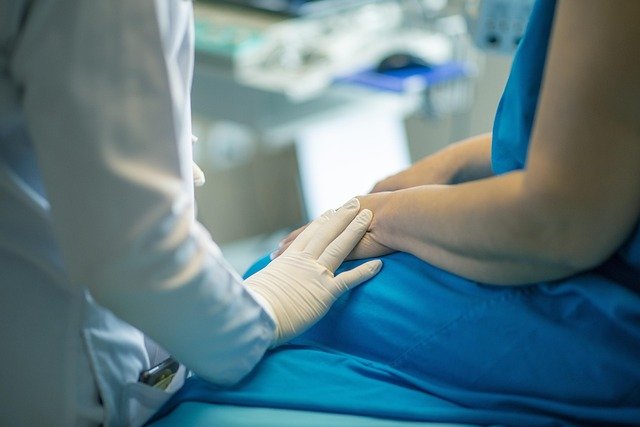Comparing shock wave and laser fragmentation for urinary calculi
This article compares two common approaches for breaking urinary calculi: extracorporeal shock wave fragmentation and endoscopic laser fragmentation. It explains how each method works, typical suitability, imaging and follow-up, and practical prevention steps including hydration and diet.

Urinary calculi, commonly called kidney stones, are treated in urology using several methods that fragment and remove stones. Two frequently used approaches are extracorporeal shock wave lithotripsy (ESWL) and endoscopic laser lithotripsy performed during ureteroscopy. This article outlines how each technique works, what imaging and follow-up are typically needed, and how metabolic factors such as calcium, oxalate and uric acid influence treatment choice and recurrence prevention. This article is for informational purposes only and should not be considered medical advice. Please consult a qualified healthcare professional for personalized guidance and treatment.
What is lithotripsy and how is it used?
Lithotripsy refers to methods that break stones into smaller fragments so they can pass naturally or be removed. In urology practice, lithotripsy takes two main forms discussed here: extracorporeal shock wave lithotripsy (ESWL), which uses focused acoustic waves from outside the body, and laser lithotripsy, which is performed through an endoscope placed into the urinary tract. Choice depends on stone size, location, composition (for example calcium oxalate versus uric acid stones), patient anatomy, and available imaging such as ultrasound or CT scan to map the stone.
How does shock wave fragmentation work?
Shock wave lithotripsy delivers acoustic pulses through the skin that converge on the stone to fragment it without an incision. It is most effective for small-to-moderate-sized renal and proximal ureteral stones, particularly when stone composition and location favor fragmentation. ESWL is usually guided by fluoroscopy or ultrasound to target the stone precisely. Patients may require analgesia or sedation, and multiple sessions sometimes are needed. Follow-up imaging—either ultrasound or CT scan—confirms fragmentation and clearance. ESWL is less invasive but may be less effective for very hard stones or for stones located distal in the ureter.
How does laser fragmentation during ureteroscopy work?
Laser lithotripsy is performed via ureteroscopy: a small endoscope is passed through the urethra and bladder into the ureter or kidney. A laser fiber (commonly a holmium laser) fragments the stone into dust or extractable pieces. This method allows direct visualization, higher precision, and is often chosen for ureteral or intrarenal stones not well-suited to ESWL. A temporary stent may be placed after ureteroscopy to relieve obstruction and facilitate healing. Imaging such as CT scan prior to the procedure and ultrasound afterward help assess success. Laser lithotripsy generally has high stone-free rates in a single session, but it is more invasive than shock wave treatment.
When do urology teams choose shock wave versus laser?
Decision-making considers stone size, composition, patient body habitus, and anatomy. Stones under roughly 2 cm in the kidney may be managed with ESWL, whereas larger stones or those in difficult locations (for example the lower-pole calyx) often require ureteroscopic laser or percutaneous approaches. Stone analyses showing calcium oxalate or uric acid content also guide expectations: some compositions respond less predictably to shock waves. Patient factors—such as pregnancy, coagulation status, or urinary tract anomalies—affect suitability. Imaging modalities including ultrasound and CT scan provide the detail needed to plan whether lithotripsy or laser fragmentation is more appropriate.
Recovery, stents, imaging and recurrence prevention
Recovery differs between approaches: ESWL is typically outpatient with possible flank discomfort and transient hematuria; ureteroscopy with laser may involve stent-related symptoms like urinary frequency or urgency until stent removal. CT scan or ultrasound is used to confirm clearance; ultrasound reduces radiation exposure for follow-up when appropriate. Prevention of recurrence involves metabolic assessment of diet, hydration, and metabolism: increasing fluid intake, moderating dietary sodium, and adjusting calcium and oxalate intake can lower risk. Identifying metabolic disorders that predispose to stones—such as hypercalciuria or elevated uric acid—allows targeted interventions. Long-term recurrence prevention often combines lifestyle changes with medical management guided by a urology or nephrology team.
Practical considerations for patients and local services
Patients should discuss with their urology team which local services offer ESWL or ureteroscopic laser, because availability varies by region and facility. Pre-procedure imaging and laboratory workup usually include CT scan or ultrasound and urine studies to assess infection risk. Ask about the anticipated need for a stent, the typical recovery timeline, and follow-up imaging to verify stone clearance and monitor for recurrence. When evaluating local services in your area, consider procedural experience, imaging capabilities, and post-procedure support for prevention counseling on hydration, diet, and metabolic testing.
Choosing between shock wave and laser fragmentation is a matter of matching stone characteristics and patient factors to the strengths of each technology. ESWL can be less invasive and sufficient for many small stones, while laser lithotripsy provides high control and success for a wider range of stone sizes and locations. Both approaches integrate imaging (ultrasound, CT scan), may involve temporary stent placement, and require attention to prevention strategies—hydration, dietary adjustments, and management of metabolic risks such as abnormal calcium, oxalate or uric acid levels—to reduce recurrence.
In summary, coordinated care with a urology team that uses appropriate imaging, evaluates metabolism, and advises on hydration and diet helps patients navigate treatment options and long-term prevention.






